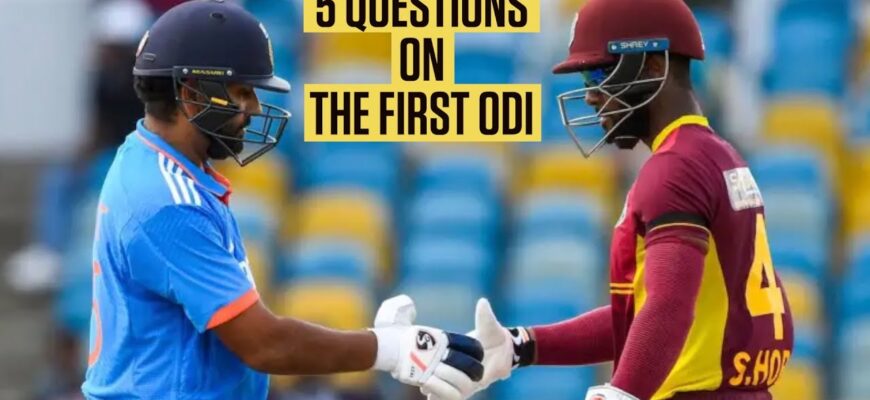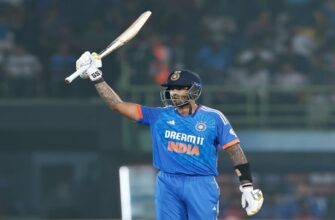The world of international cricket selection is rarely straightforward. It`s a complex tapestry woven from current form, strategic vision, player fitness, and the eternal quest for balance. Recently, the Board of Control for Cricket in India (BCCI) found itself under the familiar spotlight, announcing the squads for the upcoming white-ball series against Australia. Chief Selector Ajit Agarkar stepped forward to demystify some of the more intriguing decisions, offering a rare glimpse into the calculations that shape a national team.
The Fine Line Between “Very Close” and In-Squad: The Case of Tilak Varma
Among the most discussed exclusions was that of young batting sensation, Tilak Varma. After an impressive showing in the Asia Cup 2025, many anticipated his inclusion in the One-Day International (ODI) squad for Australia. Agarkar acknowledged Varma was “very close” to selection, a diplomatic nod to his burgeoning talent. However, the rationale offered was pragmatic, almost clinical: it`s a short, three-match series. The implication? No room for sentiment, or indeed, for carrying `extra` players when established openers like Rohit Sharma and Shubman Gill, alongside the dynamic Yashasvi Jaiswal, are already vying for top-order spots. It`s a stark reminder that in elite sports, `potential` often needs to align perfectly with `immediate tactical necessity,` especially in brief encounters where experimentation is a luxury.
Strategic Absences: Jadeja`s Omission and Pandya`s Setback
Another significant talking point was the absence of seasoned all-rounder Ravindra Jadeja from the Australia ODI squad. Agarkar clarified this wasn`t a question of form but a calculated decision based on conditions, stating, “To take two left-arm spinners to Australia is not possible.” With Washington Sundar and Kuldeep Yadav already in the mix, the selectors opted for a different balance. It`s a fascinating insight into how environmental factors dictate squad composition, often overriding a player`s inherent quality. Jadeja, a match-winner with both bat and ball, and arguably one of the best fielders in the world, remains firmly “in the scheme of things,” but even stalwarts can find themselves strategically benched. A classic case of chess, not checkers.
Meanwhile, the all-important Hardik Pandya will miss the Australia tour, sidelined by a quadriceps injury sustained before the Asia Cup final. Agarkar`s update confirmed the injury, with Pandya set to begin rehabilitation. This highlights the ever-present fragility of player fitness, especially for multi-faceted cricketers who shoulder significant burdens. Pandya`s absence undoubtedly reshapes India`s plans, underscoring how quickly unforeseen circumstances can impact strategic decisions and the importance of a robust injury management protocol.
The Long Game: Workload Management and Fresh Faces
Beyond the immediate series, the selectors` statements revealed a keen eye on the future and the delicate balance of player welfare. Pace spearhead Jasprit Bumrah, notably rested from the Australia ODIs but included in the T20I side, is a prime example of proactive workload management. Agarkar emphasized a clear plan for both Bumrah and Mohammed Siraj, acknowledging the extensive overs they bowl across formats. This judicious approach aims to “minimize the risk of injuries,” a critical consideration given the relentless international schedule. It’s an investment in the longevity of their star bowlers, recognizing that a fit player for key tournaments is worth more than a perpetually fatigued one for every bilateral series.
The squad also welcomes fresh blood, with Nitish Reddy earning a call-up to assess his capabilities in white-ball cricket. Previously noted more for his Test potential, Reddy`s inclusion offers selectors a chance to “see what he can do,” particularly as a rare fast-bowling all-rounder. Similarly, Dhruv Jurel receives his maiden ODI call-up. Agarkar`s explanation pointed to Jurel`s role as a lower-order batsman, differentiating him from top-order players like Sanju Samson and reinforcing the search for specific skill sets to fill particular squad “spots.” These selections are less about immediate impact and more about broadening the talent pool and defining specialist roles for the future.
The Unwavering Mandate: Domestic Cricket Reigns Supreme
Finally, Agarkar reiterated the BCCI`s firm directive: “whenever the guys are available, they should be playing domestic cricket.” This isn`t just a suggestion; it`s a mandate. The message is clear: sustained sharpness and readiness for international duty are forged in the crucible of domestic competitions. It serves as a foundational principle, ensuring that despite the glitz and glamour of the international stage, players remain grounded and honed through consistent match practice at home. A vital safeguard against complacency, and a testament to the enduring importance of the grassroots game.
In essence, India`s squad announcement for the Australia ODIs transcends mere player names. It`s a strategic blueprint, carefully constructed to balance immediate competitive needs with long-term player development and injury prevention. From the nuanced reasons behind Tilak Varma`s exclusion to the tactical resting of star bowlers and the deliberate nurturing of new talent, the selections reflect a multifaceted approach to building a formidable cricketing force. It’s a perpetual balancing act, where every decision, every omission, and every inclusion tells a part of the grand narrative of India`s cricketing ambitions.







